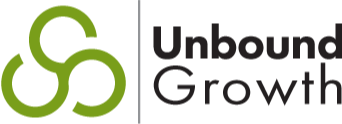Step 3: Implementing the Plan
Harnessing the herd without going over a cliff.
"If I were given one hour to save the planet, I would spend 59 minutes defining the problem and one minute solving it."
~Albert Einstein
Unfortunately for many business owners and marketers, this is the stage where they start. There is a distinction between strategy and tactic. Step 3 is all about the using the strategy as the guide book for the tactical.
Your investment in steps 1 and 2 will more than return to you in the amount of time saved going back and forth with design, copy and functionality changes.
The implementation phase of your internet marketing is where you take the 'how' and turn it into the 'what'. With step 1, you have identified the influences your competition, business and industry have on your prospects as well as how they go about their search. In step 2, you have figured out how to navigate the landscape, tied it into your business goals, set the plan of action and figured out what you need to make it happen.
How to keep a clear head during your internet marketing implementation.
Purpose of Implementation
Well that seems rather obvious doesn't it? Or does it? Inbound marketing is a fundamental shift for marketers and business owners. It means that your prospects are voluntary participants in your sales process and studies have shown that they more likely to buy. Being in the right place, at the right time, with the right message has been made all that much easier with the internet.
The tactics you use for your inbound marketing is likely to be a combination of things, such as:
- Web Design & Development
- Search Engine Optimization
- Pay-per-Click Advertising
- Social Media
- Email Marketing
Process for Implementation
- Identify the necessary elements of your persuasive copy. Taking what you know about your prospect's buying mode and your sales process, your goal here is to align your sales process with their buying process using all of the inbound marketing tactics available to you.
- Create the mock-up. How does the layout come together visually? Elements to consider here are navigation (UI), branding, page titles (SEO), header graphics, etc. Each element should have a function and priority in the conversion process. By giving elements priority it is easy to decide which ones need the most emphasis and where they should belong on the page.
- Design without color. I know of some designers who will spend weeks deciding on just the exact shade of blue to have the right emotional impact. That is fine, however at this stage you want to be able to look at the mock up to decide without emotional influence. If it looks good in black and white, it will be fantastic with color. This will make your design decisions easier and faster.
- Add color. I leave this to my designer experts. It is an art and a science all of it's own. The right use of color should create consistency and a positive emotional response.
- Development. It's alive! Now begins the HTML development. (Again, something I leave to the experts!) Things to consider here are download time, compatibility with multiple browsers, CSS that is compliant with Web standards and fonts that can be easily read on a screen.
- Testing! Before your site or campaign goes live- test that links go where they should, forms work, copy is proof-read, etc. Even though a website will always be a work in progress, it doesn't hurt to put your best face forward.
By first creating a persuasive wireframe that lays out the processes that are fundamental to your business goals and to conversion, you create a structure that your designers and developers can work within and support.
Imagine cowboy Joe and how much time he would waste (and cattle going off a cliff) because he did not know the landscape, where the predators lurk, or ended up on a route that was impassable. He just trotted out and followed all the other cowboy's paths, because they must know where they are going right?
Now imagine cowgirl Nellie with a GPS, topography map, and a heat sensor to see where animal activity is happening. Which one do you think is more likely to make it to their destination (goal) safely, on time, and within budget? Does this mean that Nellie won't encounter issues and dangers? Of course not, but she is less likely to be overwhelmed by them, is able to keep her sanity and cool, and deal with issues swiftly and decisively when they arise.
Does internet marketing overwhelm you? Do you feel like part of the herd headed straight for the cliff? Download the presentation I did with the Maine Marketing Association where we will talked more about how you can take the reins of the internet for your business.






